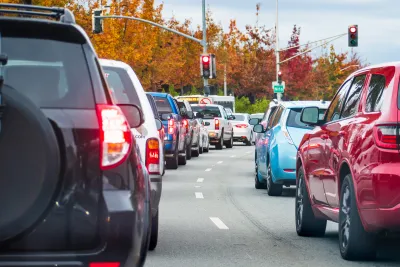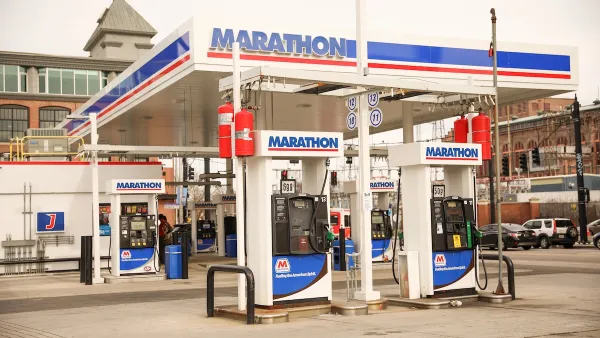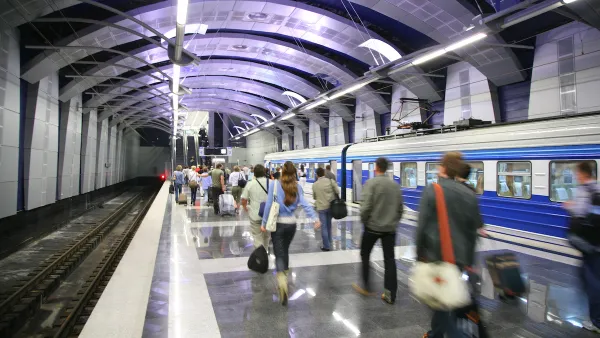A USDOT report calls for a set of strategies including but not limited to electrification of the transportation sector.

A report from the U.S. Department of Transportation highlights the need to reduce driving in addition to adopting electric vehicles to reach decarbonization goals, writes Kea Wilson in Streetsblog USA — “but it's unclear if any level of government is prepared to take the steps necessary to do both,” Wilson adds.
Assuming that no further climate legislation is passed, one study cited in the report found that transport emissions are on track to grow a staggering 23 percent by 2050, rather than falling to net zero, which experts say is necessary to avoid the worst impacts of climate change.
According to the report, no level of government has taken sufficient steps to reduce driving. “The U.S. will not be able to decarbonize the transportation sector by midcentury without addressing increased demand,” the report emphasizes.
The report calls for increasing convenience “by decreasing the distance Americans need to travel to key destinations (and the safety they can expect along the journey), as well as ‘improving efficiency’ by supporting mass transportation and better freight strategies.”
Wilson points out that, despite the report’s findings, USDOT continues to award grants to projects that perpetuate car-centric planning and transportation systems.
FULL STORY: USDOT Warns Congress That Americans Need to Drive Less to Survive Climate Change

National Parks Layoffs Will Cause Communities to Lose Billions
Thousands of essential park workers were laid off this week, just before the busy spring break season.

Retro-silient?: America’s First “Eco-burb,” The Woodlands Turns 50
A master-planned community north of Houston offers lessons on green infrastructure and resilient design, but falls short of its founder’s lofty affordability and walkability goals.

Delivering for America Plan Will Downgrade Mail Service in at Least 49.5 Percent of Zip Codes
Republican and Democrat lawmakers criticize the plan for its disproportionate negative impact on rural communities.

Test News Post 1
This is a summary

Test News Headline 46
Test for the image on the front page.

Balancing Bombs and Butterflies: How the National Guard Protects a Rare Species
The National Guard at Fort Indiantown Gap uses GIS technology and land management strategies to balance military training with conservation efforts, ensuring the survival of the rare eastern regal fritillary butterfly.
Urban Design for Planners 1: Software Tools
This six-course series explores essential urban design concepts using open source software and equips planners with the tools they need to participate fully in the urban design process.
Planning for Universal Design
Learn the tools for implementing Universal Design in planning regulations.
EMC Planning Group, Inc.
Planetizen
Planetizen
Mpact (formerly Rail~Volution)
Great Falls Development Authority, Inc.
HUDs Office of Policy Development and Research
NYU Wagner Graduate School of Public Service





























